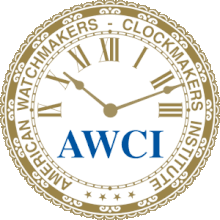
Abraham-Louis Breguet, born in Neuchâtel, then a Prussian principality, was a horologist who made many innovations in the course of a career in watchmaking industry. He was the founder of the Breguet company, which is now the luxury watch division of the Swiss Swatch Group.

The Worshipful Company of Clockmakers was established under a royal charter granted by King Charles I in 1631. It ranks sixty-first among the livery companies of the City of London, and comes under the jurisdiction of the Privy Council. The company established a library and its museum in 1813, which is the oldest specific collection of clocks and watches worldwide. This is administered by the company's affiliated charity, the Clockmakers' Charity, and is presently housed on the second floor of London's Science Museum. The modern aims of the company and its museum are charitable and educational, in particular to promote and preserve clockmaking and watchmaking, which as of 2019 were added to the HCA Red List of Endangered Crafts.

A watchmaker is an artisan who makes and repairs watches. Since a majority of watches are now factory-made, most modern watchmakers only repair watches. However, originally they were master craftsmen who built watches, including all their parts, by hand. Modern watchmakers, when required to repair older watches, for which replacement parts may not be available, must have fabrication skills, and can typically manufacture replacements for many of the parts found in a watch. The term clockmaker refers to an equivalent occupation specializing in clocks.

A clockmaker is an artisan who makes and/or repairs clocks. Since almost all clocks are now factory-made, most modern clockmakers only repair clocks. Modern clockmakers may be employed by jewellers, antique shops, and places devoted strictly to repairing clocks and watches. Clockmakers must be able to read blueprints and instructions for numerous types of clocks and time pieces that vary from antique clocks to modern time pieces in order to fix and make clocks or watches. The trade requires fine motor coordination as clockmakers must frequently work on devices with small gears and fine machinery.
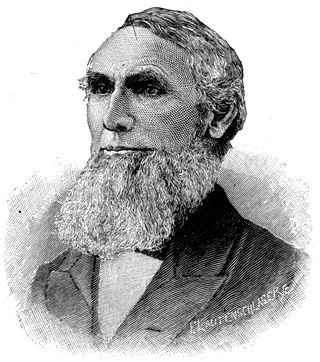
Aaron Lufkin Dennison was an American watchmaker and businessman who founded a number of companies.

Ferdinand Berthoud, was a scientist and watchmaker. He became master watchmaker in Paris in 1753. Berthoud, who held the position of Horologist-Mechanic by appointment to the King and the Navy, left behind him an exceptionally broad body of work, in particular in the field of marine chronometers.

The Clockmakers’ Museum in London, England, is believed to be the oldest collection specifically of clocks and watches in the world. The collection belongs to and is administered by the Clockmakers’ Charity, affiliated to the Worshipful Company of Clockmakers, founded in 1631 by Royal Charter. Since 2015 it has been housed in a gallery provided by the Science Museum in South Kensington, having formerly been located in the Guildhall complex in the City of London since 1874, where it first opened to the public. Admission is free.

Chronometry or horology is the science studying the measurement of time and timekeeping. Chronometry enables the establishment of standard measurements of time, which have applications in a broad range of social and scientific areas. Horology usually refers specifically the study of mechanical timekeeping devices, while chronometry is broader in scope, also including biological behaviours with respect to time (biochronometry), as well as the dating of geological material (geochronometry).

Edward John Dent (1790–1853) was a famous English watchmaker noted for his highly accurate clocks and marine chronometers.

The National Association of Watch & Clock Collectors, Inc. (NAWCC) is a nonprofit association of people who share a passion for collecting watches and clocks and studying horology. The NAWCC's global membership is composed of nearly 10,000 individuals, businesses, and institutions, with more than 1.25 million users accessing its main website and online Forums each year. The Forums, offer NAWCC members and nonmembers the opportunity to ask questions about watches and clocks.
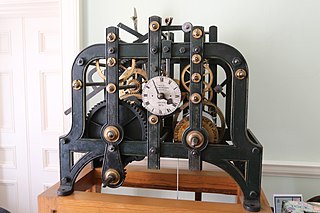
The British Horological Institute (BHI) is the representative body of the horological industry in the United Kingdom. It was founded by a group of clockmakers in 1858, and has its current premises at Upton Hall in Nottinghamshire, which includes a museum of clock history.

The Federation of the Swiss Watch Industry (FH) is the Swiss watch industry's leading trade association, headquartered in Bienne, Switzerland. The Federation is a private, professional and non-profit association.
Jonathan Betts MBE is Curator Emeritus at the Royal Observatory, Greenwich, a horological scholar and author, and an expert on the first marine timekeepers created by John Harrison in the middle of the 18th century. He was formerly Senior Specialist in horology at Greenwich. Between 2016 and 2019 he served on the board of trustees of the Institute of Conservation.
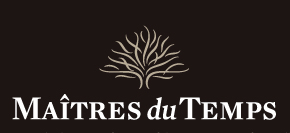
Maîtres du Temps is a Swiss watch company. Founded in 2005 by Steven Holtzman, the brand is based in La Chaux-de-Fonds, Switzerland. The brand launched in Geneva in 2008 with Chapter One, a watch developed by Christophe Claret, Roger Dubuis and Peter Speake-Marin.
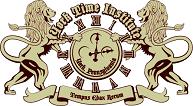
The York Time Institute is a school in York, Pennsylvania providing instruction in the conservation, restoration, and repair of traditional and modern time-keeping devices. It was founded in 2008 by Daniel Nied, former Director of the School of Horology of the National Association of Watch and Clock Collectors. The school is housed in a 19th-century building that also housed two different watchmakers in its 150-year history.

Jean-Antoine Lépine was a French watchmaker. He contributed inventions which are still used in watchmaking today and was amongst the finest French watchmakers, who were contemporary world leaders in the field.
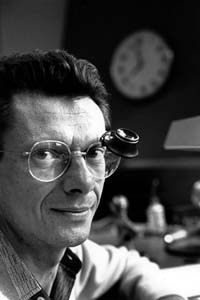
Dominique Loiseau was a French and Swiss watchmaker who worked at the highest levels of complex horology from the mid 1970s onwards He was the creator of several notable timepieces, including six Montres de Sables, the Rose de Temps clock, the Renaissance or Capriccio pocket watches and the Blancpain 1735 wristwatch. In 2011 he presented, the Loiseau 1f4, one of the most complicated automatic watches with eight patents. Loiseau announced in 2012 a collaboration with Swiss watch manufacturer Girard-Perregaux.

Parsons Horological Institute was the first horological school in the United States. It was founded in 1886, in La Porte, Indiana. In 1898, it moved to Peoria, Illinois, eventually becoming a department of what is now Bradley University.
The Horological Society of New York (HSNY) is an American nonprofit organization dedicated to advancing the art and science of horology.
